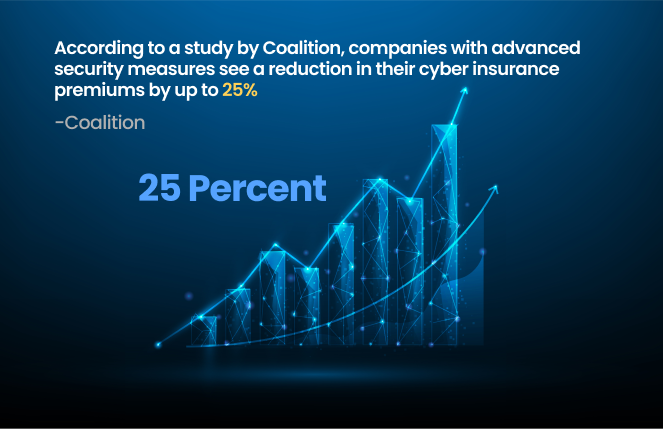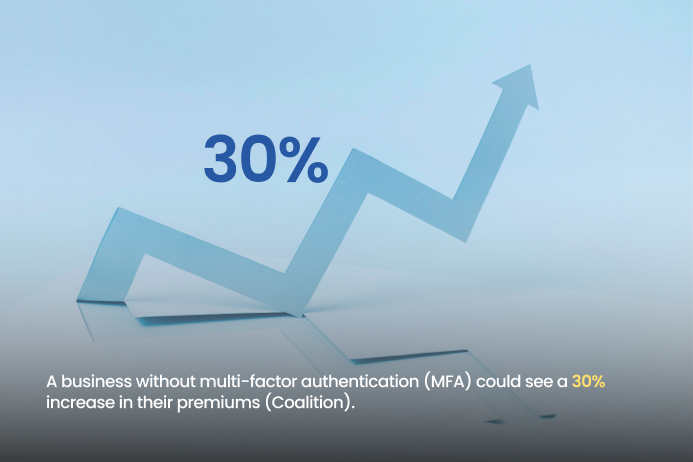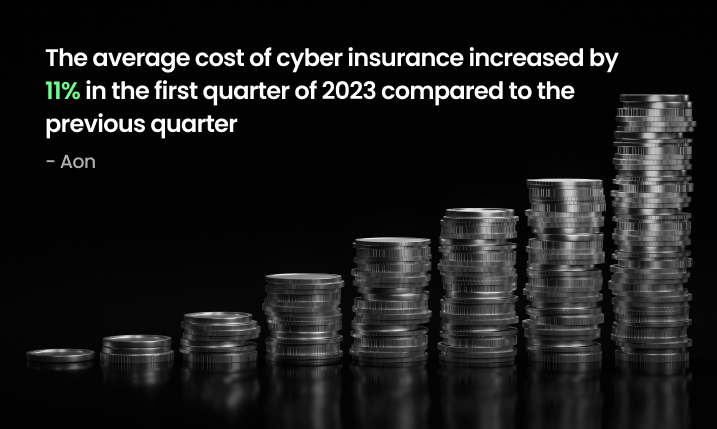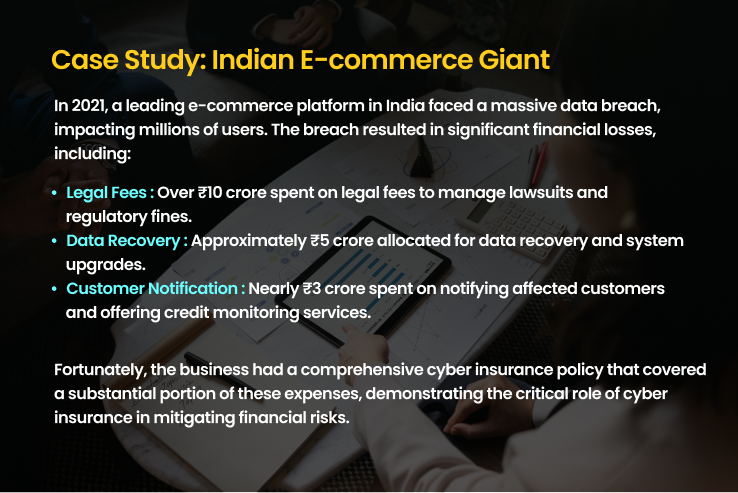“Cybercrime will cost the world $10.5 trillion annually by 2025.” – Cybersecurity Ventures. Cyber insurance has become a critical component for businesses to mitigate the financial risks associated with cyber threats. As cyber threats continue to evolve, understanding the factors that influence the cost of cyber insurance and the different pricing models used by insurers is essential for businesses in India and worldwide.
Introduction to Cyber Insurance
Cyber insurance, also known as cyber liability insurance, is designed to cover financial losses that result from cyber incidents such as data breaches, ransomware attacks, and other cybercrimes. The coverage can include costs related to legal fees, business interruption, data recovery, and more. Given the increasing frequency and sophistication of cyber attacks, businesses of all sizes are investing in cyber insurance to protect their assets and reputation.
Key Factors Influencing Cyber Insurance Costs
1. Industry and Business Type
Certain industries are more prone to cyber risks due to the sensitive nature of the data they handle. For instance:
- Healthcare: Handles personal health information (PHI) which is highly sensitive and valuable. The average cost of a data breach in the healthcare industry is $7.13 million (IBM Security, 2020).
- Finance: Involves financial data and transactions that are prime targets for cybercriminals. Financial institutions spend an average of $18.3 million per year on cybersecurity (Accenture, 2021).
- E-commerce: High volume of online transactions and customer data makes it a significant target. For example, a leading e-commerce platform in India faced a massive data breach, impacting millions of users and costing millions in damages.
Additional sectors that face heightened cyber risks include:
- Retail: Retail businesses often handle large volumes of credit card transactions and personal customer information, making them a frequent target for cyber attacks. A notable example is the data breach at Target in 2013, which affected over 40 million customers.
- Manufacturing: The manufacturing sector is increasingly vulnerable due to the rise of Industrial Internet of Things (IIoT) devices, which can be exploited by cybercriminals. The WannaCry ransomware attack in 2017 disrupted manufacturing operations worldwide, causing significant financial losses.
- Education: Educational institutions store sensitive student and staff information. The 2020 ransomware attack on the University of California, San Francisco, which resulted in a $1.14 million ransom payment, highlights the sector’s vulnerability.
- Government: Government agencies are prime targets for cyber attacks due to the sensitive nature of the data they handle. In 2020, a ransomware attack on the city of New Orleans resulted in over $7 million in damages and recovery costs.
- Energy and Utilities: Critical infrastructure sectors like energy and utilities are attractive targets for cybercriminals. The 2021 Colonial Pipeline attack in the US led to significant fuel supply disruptions and a $4.4 million ransom payment.
2. Company Size and Revenue
Larger businesses with higher revenues generally face higher premiums due to increased exposure and potential financial impact in the event of a cyber incident. Premiums can be calculated as a percentage of the business’s annual revenue:

- Small Businesses: On average, small businesses in the US spend about $1,500 to $1,750 annually on cyber insurance (Insureon, 2024).

- Large Enterprises: Larger firms can see premiums exceeding $100,000 annually, depending on their risk profile and coverage needs (AdvisorSmith).
3. Cybersecurity Measures
The effectiveness of a business’s cybersecurity measures significantly impacts the cost of cyber insurance. Insurers assess the strength of a company’s security infrastructure, including firewalls, encryption protocols, and employee training programs:

- Strong Cybersecurity Practices: Businesses with robust cybersecurity practices, including regular security audits, incident response plans, and employee training, may enjoy lower premiums. According to a study by Coalition, companies with advanced security measures see a reduction in their cyber insurance premiums by up to 25%.

- Weak Cybersecurity Practices: Conversely, companies with outdated security systems and poor cybersecurity practices may face higher premiums. For example, a business without multi-factor authentication (MFA) could see a 30% increase in their premiums (Coalition).
4. Claims History
A business with a history of significant cyber incidents and claims may be viewed as a higher risk and face higher premium costs. Conversely, businesses with a clean claims history may be eligible for lower premiums:
- Frequent Claims: Businesses with multiple claims may see their premiums increase by up to 50% (European Actuarial Journal) (SpringerLink).
- Clean History: Companies with no previous claims can benefit from discounts and lower premiums, sometimes up to 20% lower (LiveWell).
5. Type and Amount of Coverage
The level of coverage a business chooses also affects the premium. Policies with higher coverage limits typically come with higher premiums. Cyber insurance policies generally have two limits:
- Per-occurrence Limit: The maximum amount the insurer will pay for a single claim, typically ranging from $1 million to $5 million (Insureon).
- Aggregate Limit: The maximum amount the insurer will pay for all claims during the policy period. Businesses with higher aggregate limits will face higher premiums.
Quick Read: Cyber Insurance Premiums in 2024: What Factors Are Driving Costs?

Pricing Models for Cyber Insurance
Insurers use various models to price cyber insurance policies, considering multiple factors to estimate the risk and set premiums accordingly:
1. Industry Benchmarking
This model uses industry-specific data and historical claims information to benchmark the risk profile of a business against others in the same industry. It helps insurers estimate the likelihood and severity of cyber incidents for a particular industry:
- Example: In the finance sector, premiums are often higher due to the high risk of cyber attacks. According to a report by Aon, financial institutions saw an average premium increase of 20% in 2023 due to the heightened risk environment (AON).
2. Size-Based Pricing
Insurance premiums are determined based on the size of the business, typically measured by annual revenue or employee count. Larger businesses generally face higher premiums:
- Example: A large e-commerce company with annual revenues exceeding $500 million might pay premiums upwards of $100,000 annually, while a small retail business with $5 million in annual revenue might pay around $5,000 (AdvisorSmith).
3. Claims History-Based Pricing
Insurers consider the claims history of a business when determining premiums. A business with a significant history of cyber incidents may face higher premium costs:
- Example: A company that experienced a major data breach and filed a claim for $1 million might see their premiums increase by 30-50% upon renewal (European Actuarial Journal) (SpringerLink).
4. Frequency-Severity Model
This model involves assessing the frequency and severity of potential cyber incidents to calculate premiums. It helps insurers estimate the potential losses from cyber risks:
- Example: Using historical data, insurers might determine that a specific industry faces frequent but low-severity attacks, leading to moderate premiums. Conversely, industries facing infrequent but high-severity attacks might see higher premiums (European Actuarial Journal) (SpringerLink).
Real-Life Stories and Statistics
Cyber insurance costs have been on the rise due to the increasing number of cyber incidents. For example:

- Global Increase: The average cost of cyber insurance increased by 11% in the first quarter of 2023 compared to the previous quarter (AON).
- India-Specific Data: The Indian Computer Emergency Response Team (CERT-In) reported over 11.5 lakh cyber security incidents in 2021, underscoring the urgent need for robust cyber insurance policies in India.
Case Study: Indian E-commerce Giant

In 2021, a leading e-commerce platform in India faced a massive data breach, impacting millions of users. The breach resulted in significant financial losses, including:
- Legal Fees: Over ₹10 crore spent on legal fees to manage lawsuits and regulatory fines.
- Data Recovery: Approximately ₹5 crore allocated for data recovery and system upgrades.
- Customer Notification: Nearly ₹3 crore spent on notifying affected customers and offering credit monitoring services.
Fortunately, the business had a comprehensive cyber insurance policy that covered a substantial portion of these expenses, demonstrating the critical role of cyber insurance in mitigating financial risks.
Mitigata’s Role in Cyber Insurance
Mitigata has been at the forefront of providing comprehensive cyber insurance solutions tailored to the needs of businesses in India. By leveraging advanced risk assessment tools and partnering with leading insurers, Mitigata helps businesses secure the best coverage at competitive prices.
Call to Action: Protect your business from the financial impact of cyber threats. Learn more about Mitigata’s cyber insurance solutions and get a quote today!
Conclusion
Understanding the factors that influence the cost of cyber insurance and the different pricing models used by insurers can help businesses make informed decisions about their coverage. By investing in robust cybersecurity measures and choosing the right insurance policy, businesses can mitigate the financial risks associated with cyber incidents.
For more detailed insights and to explore how Mitigata can help your business with its cyber insurance needs, visit our website and get in touch with our experts today.

